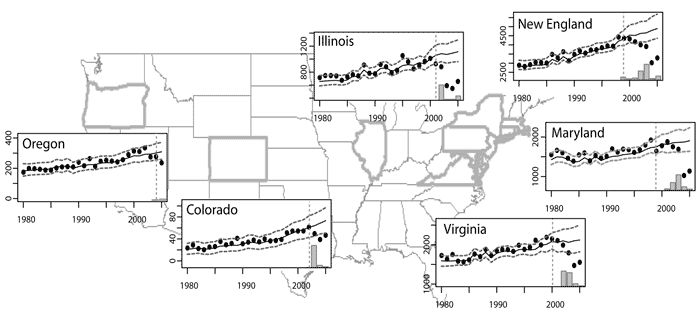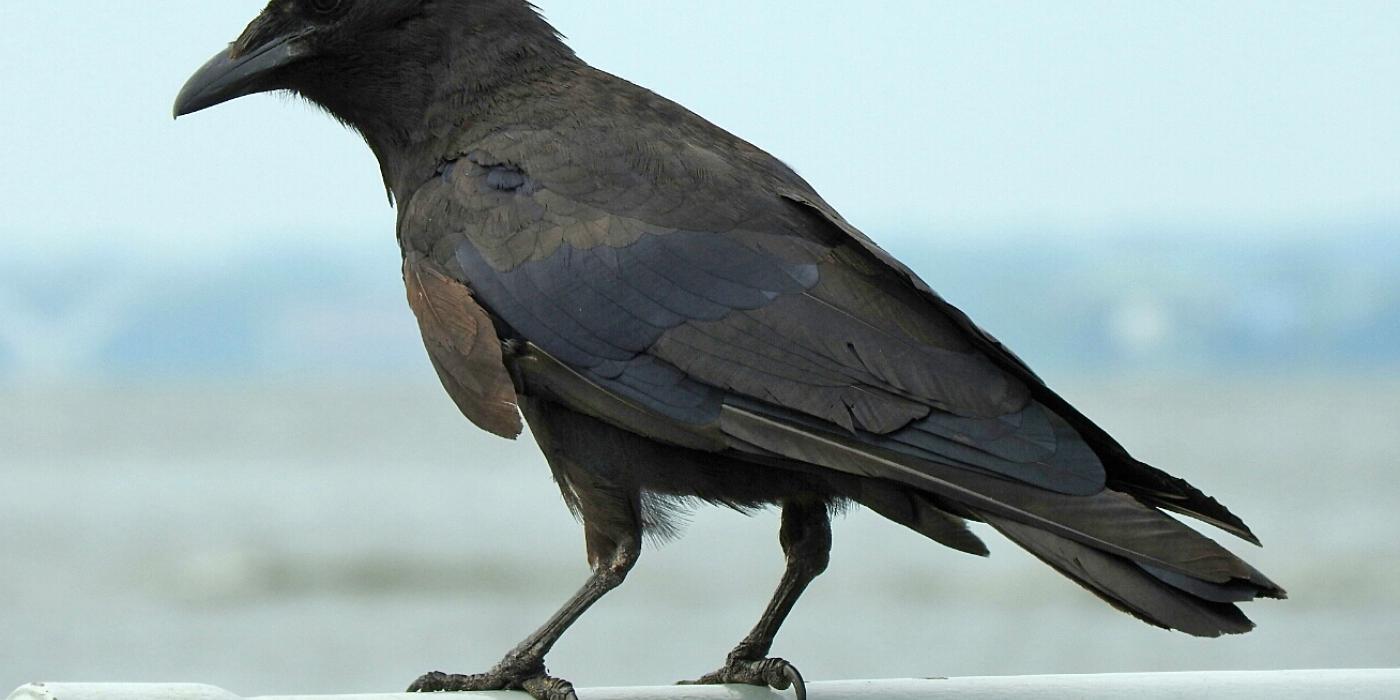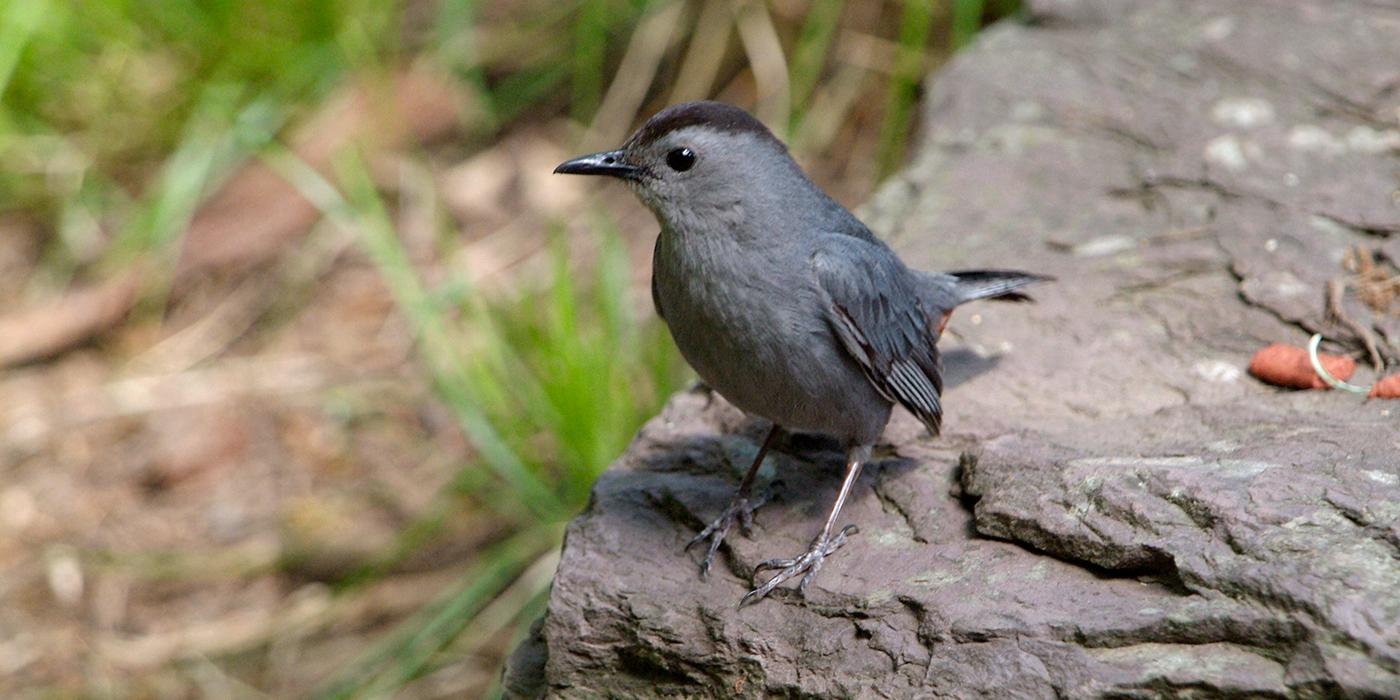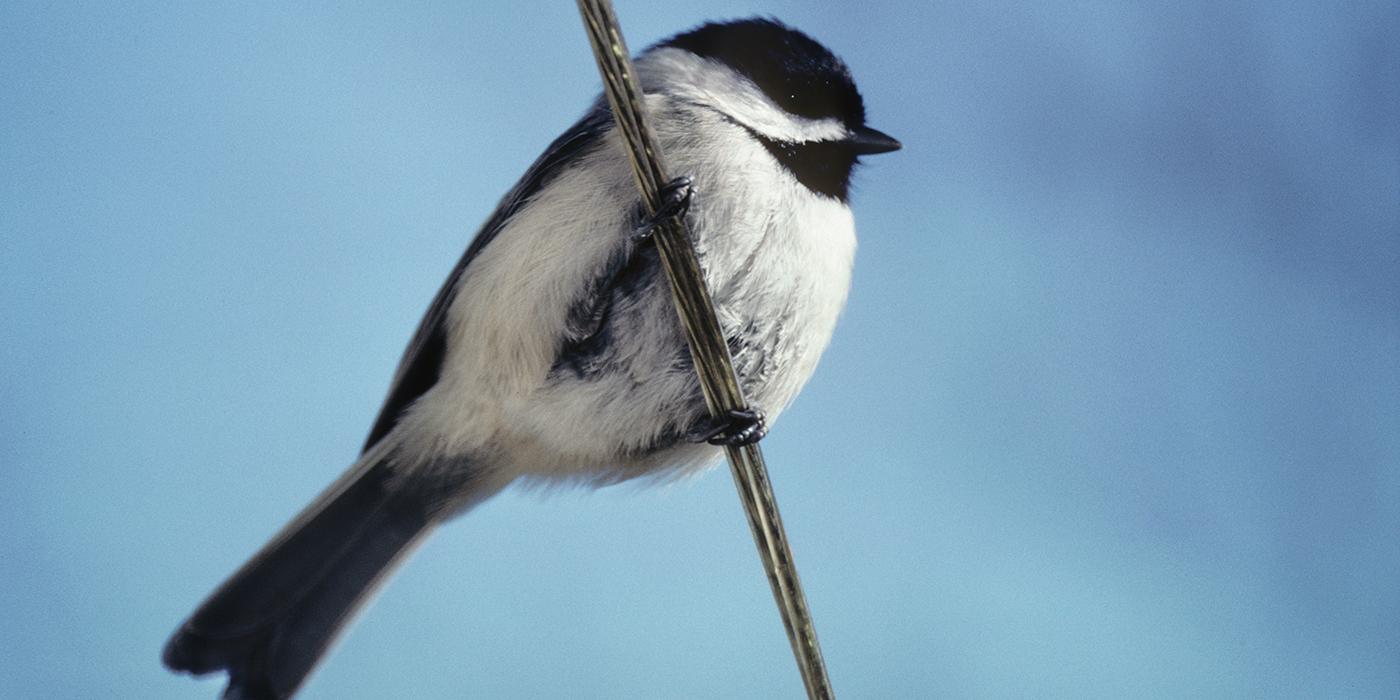Consummate Opportunist
American Crow
Few birds are so easily identified in flight as a crow, cutting a sharp, sleek image against the sky or a woodland edge with powerful, deliberate wing beats and black form. Preconceptions and lore abound about crows, translating into fear, hatred and, for those who know a little more about crows' natural history, admiration and awe upon seeing one cruise across the sky.
My best friend of childhood and I used the crow call as our secret communication, alerting each other of our availability and willingness to get together. We used the 'caw-caw' throughout our youth, knowing we could always 'talk' across the sub-urban sprawl of our neighborhood. My father and his hunting buddies impressed me with stories of crows' habit of posting 'scouts in treetops to protect the feeding flock below' and their ability to 'distinguish between a stick versus a rifle carried by someone walking across a field.' These were admirable traits in a wary animal so my friend and I felt very clever using our secret crow calls. We were, after all, being sly and trickster-ish, mimicking what we understood to be a very intelligent bird. If we'd only known the cultural connections across time and continents that fed those feelings, we'd have reveled in our crow calls even more.
The American crow, Corvus brachyrhynchos, is a large passerine (perching bird) belonging to the family Corvidae (crows and jays), and, along with a few primates, has made us re-think our own species' so-called uniqueness within the animal kingdom as the only toolmakers and problems solvers. Jet-black to purplish in color, sleek and nimble in the air, crows have a special place in human history. Yet they are maddeningly elusive and wary. They communicate about perceived danger so well that successful study of them frustrates all but the most dogged of scientists.
Many students of crows and crow behavior believe crows have had a reciprocal relationship with humans since pre-historic time'not only responding to human actions and behavior, but themselves affecting human culture and behavior in a variety of ways (Marzluff and Angell, see references below). Intriguing behavior attributed to their intelligence and social structure and hierarchy attracts a select number of researchers who are willing and able to devote the time and effort necessary to unveil the mysteries of this species. Here are a few of the fascinating findings from recent studies about this bird (or its close relatives) that provoked legend and myth in dozens of cultures across centuries and continents.
Crows are the consummate opportunists. As scavengers, they most likely evolved a close association with wolves and other hunting animals that killed prey and left carcass remains unguarded or abandoned. A logical evolutionary companion of the crow, then, would be humans as they spread across the globe, crossing land bridges and exploiting the bounty of terrestrial and aquatic environments. We can imagine crows hanging around the campsites or settlements of North America's early inhabitants, exploiting the spoils of hunting or fishing expeditions whenever the opportunity arose.
As humans fine-tuned agriculture and settled into larger, more complex landscapes, crows adapted. Obviously, human-altered environments of North America are well-suited to the American crow's way of making a living. Agricultural lands, urban and suburban areas, and all the interfaces between rural and urban, field and forest provide crows with a host of different ways to find food and thrive. And, in fact, American crow populations across the country have generally increased size and geographic range over the last several decades.
Crows are tool users, but they are also toolmakers and problem solvers. Their behavior and apparent ingenuity make them a fascinating group. Brain size increases with body weight, a relationship observed across nearly all animal groups. A corvid's brain size, however, is more in line with that of mammals than birds'and more in line with primates, at that'when graphed against its body mass. It's a relationship that undoubtedly figures into what many researchers consider the bird's intelligence in getting along in the world.
Placed in a situation where a crow can reach but not obtain a morsel of food using a straight piece of wire it will actually bend one end of the wire into a hook. It then uses this hooked end to reach and obtain the previously unattainable food.
Like some other birds, crows will drop food items, such as shells and nuts, from the air onto hard surfaces in order to crack them open and get access to whatever is inside. But crows have taken it to another level, placing hard-to-crack nuts on roads in front of passing vehicles, then retrieving the crushed-open nut.
The same attributes that lend crows their keen intelligence undoubtedly figure in their status as one of the more able predators of songbirds nests?robbing both eggs and nestlings for food. In some studies done in Maryland and the Great Smokey Mountains in the 1980s, American crows emerged as important players in predation of songbirds' nests, especially where the woodlot or forest stands are relatively small. As crows easily adapt to human-induced changes in the landscape, and tend to be highly associated with forest edges, forest-dwelling birds in small tracts of wooded land might face higher densities of crows'and therefore higher nest predation by them'than birds in larger forested areas.
As with other long-lived, social animals, crows exhibit behavior that can only be described as play. Reports of crows grabbing an object like a foam toy from a backyard or something as simple as a piece of paper and creating a game-like play of shaking, dropping, and repeatedly retrieving it are common from researchers and birders alike. And the play does not always require such objects; crows are quite content to make use of natural conditions. They've been seen flying hard against a stiff wind, climbing to a certain height, only to let themselves be taken by its currents as they fall Earthward in a series of rolls and tumbles before catching themselves and doing it all over again.
In what appears to be a display of dead crows, individuals lie on the ground on sunny days with wings spread wide and eyes glazed over, looking for all the world as if they are injured, sick, or dead. Upon being approached, however, they quickly rouse themselves and flee. The rationale for this behavior is not certain, but crow enthusiasts believe it is diet-related. The 'sunning' of the natural oils on the crows' feathers creates Vitamin D. Preening and licking of feathers after such sunning then provides them with this dietary requirement.
Crows have also been observed stretching out atop anthills, allowing themselves to be covered in ants. They will even take the ants and crush them at times, then smear the squashed insects onto their feathers. The formic acid and anal fluids of the ants have a repellant quality that some think helps rid the crows of parasites. The live ants that are allowed to crawl upon their bodies may be 'harvesting' parasitic critters, thus helping to rid the crows of problems and providing food for the ant colony involved. Interestingly, not all crows indulge in anting, making researchers think that this behavior is learned and passed down generationally within certain family groups.
American crows, like many of their close relatives, spend their lives steeped in a social stew where the tension between cooperation and competition infuses all interactions. A lifelong, monogamous relationship between mates plays off against competition with other mated pairs and offspring for resources and territory. Younger individuals will likely spend much of their time with siblings of their own or another related brood, and even help their parents raise young from subsequent clutches. Seasonally, crows tend to associate with family during spring and summer, only to go off and join large aggregations in fall and winter. Some of these big groups of roosting crows can harbor thousands of individuals.
Many species in the crow's family of Corvidae display an uncanny ability to cache or store food such as nuts and other items in places where they then retrieve them later. Some species are specialized at this behavior, and the spatial and/or episodic memory needed to remember where items are stores is thought to be related to the size of the hippocampus in the brain. Most corvids have relatively large hippocampal areas. The American crow is classified as a 'moderate' cacher, meaning that it caches food throughout the year, but is never completely dependent upon those items.
Caching of food has its own strategy. As crows are social and often in close proximity to each other, caching some object for later use becomes a challenge. No individual wants to let a sibling or parent or anyone else know where the object gets hidden. Hiding, then, must be done slyly. Observers have watched crows pretend to hide something in one place, presumably in an attempt to fool other crows that are watching to see where the cache might be.
Yet all the craftiness and stealth in the world seems to have done little for the American crow's ability to evade the recent onslaught of West Nile Virus (WNV). In a study that used 26 years of data from the Breeding Bird Survey and examined population changes in 20 avian species across North America during WNV's wave across the North American continent, the American crow ranked as the hardest hit bird on the list. Across the continent, all six regions examined showed the American crow suffering considerably more than other species.

The figure shows American crow population observations during the WNV period from the late 1990s into the early 2000s. Taken from an article in Nature, the data depict how severely crows suffered from the virus's spread across the North American continent. Once present (seen in the vertical dotted line depicting its detection in the region), WNV took a heavy toll on American crow populations in all six regions studied. More work needs to be done to determine why crows seem to have been so strongly affected compared to other bird species.



